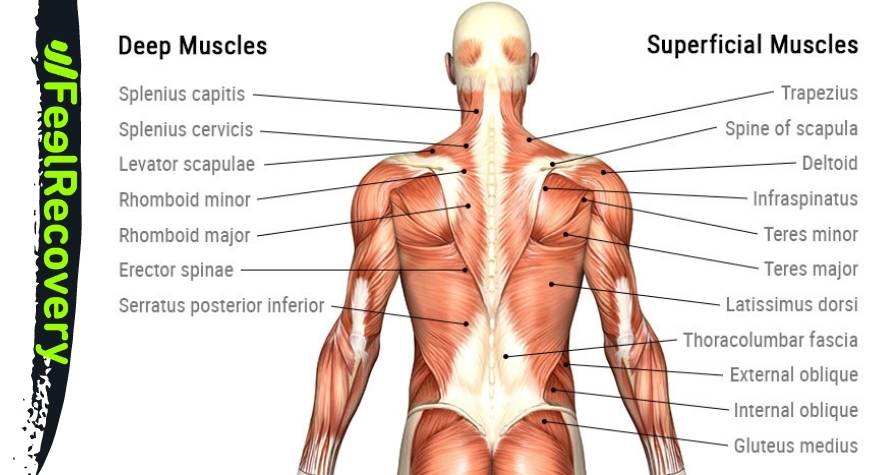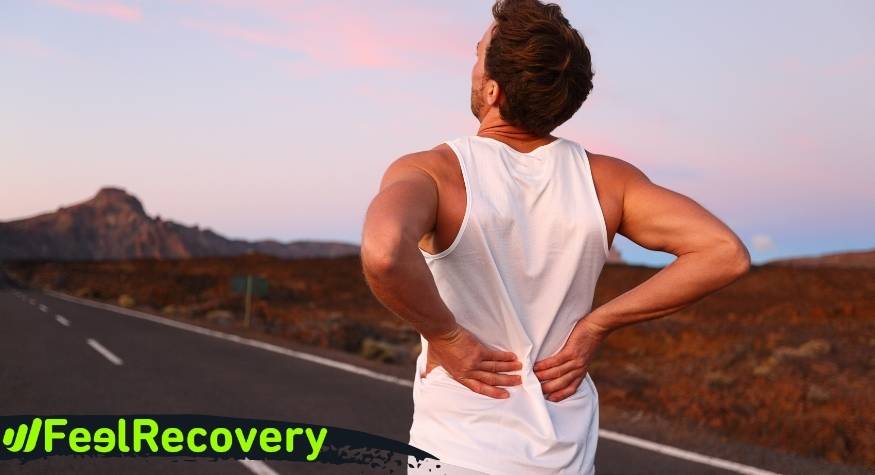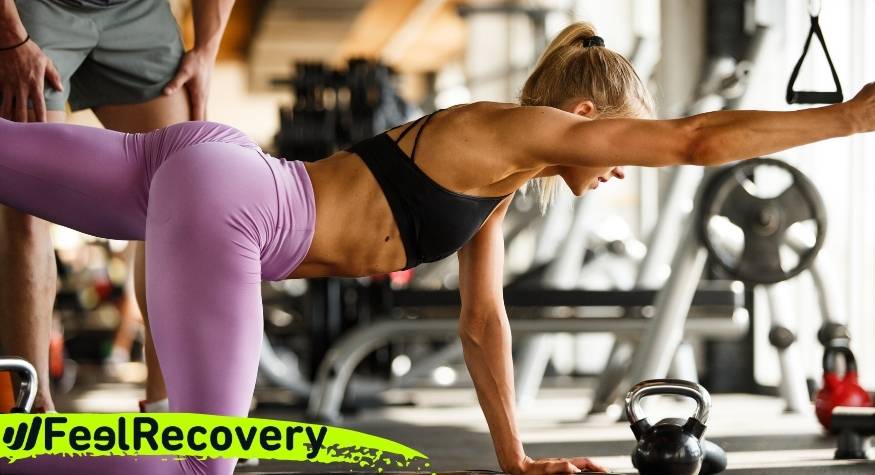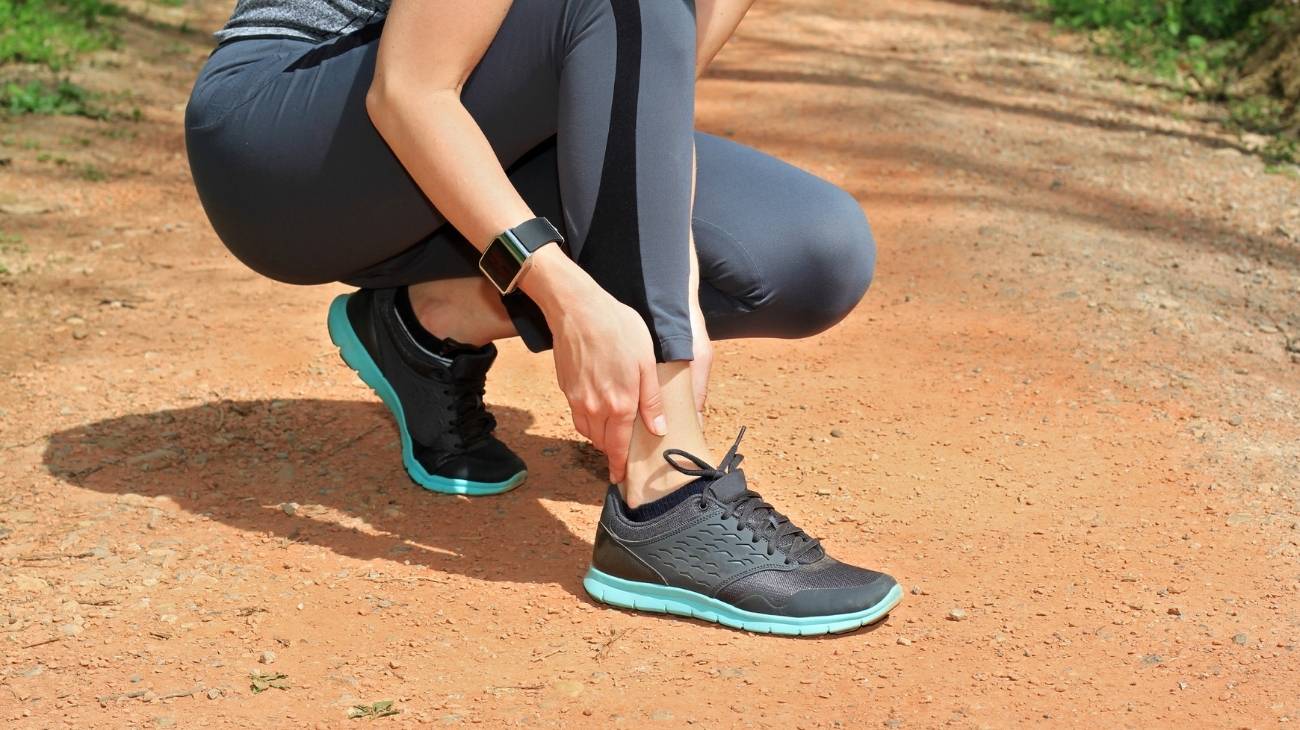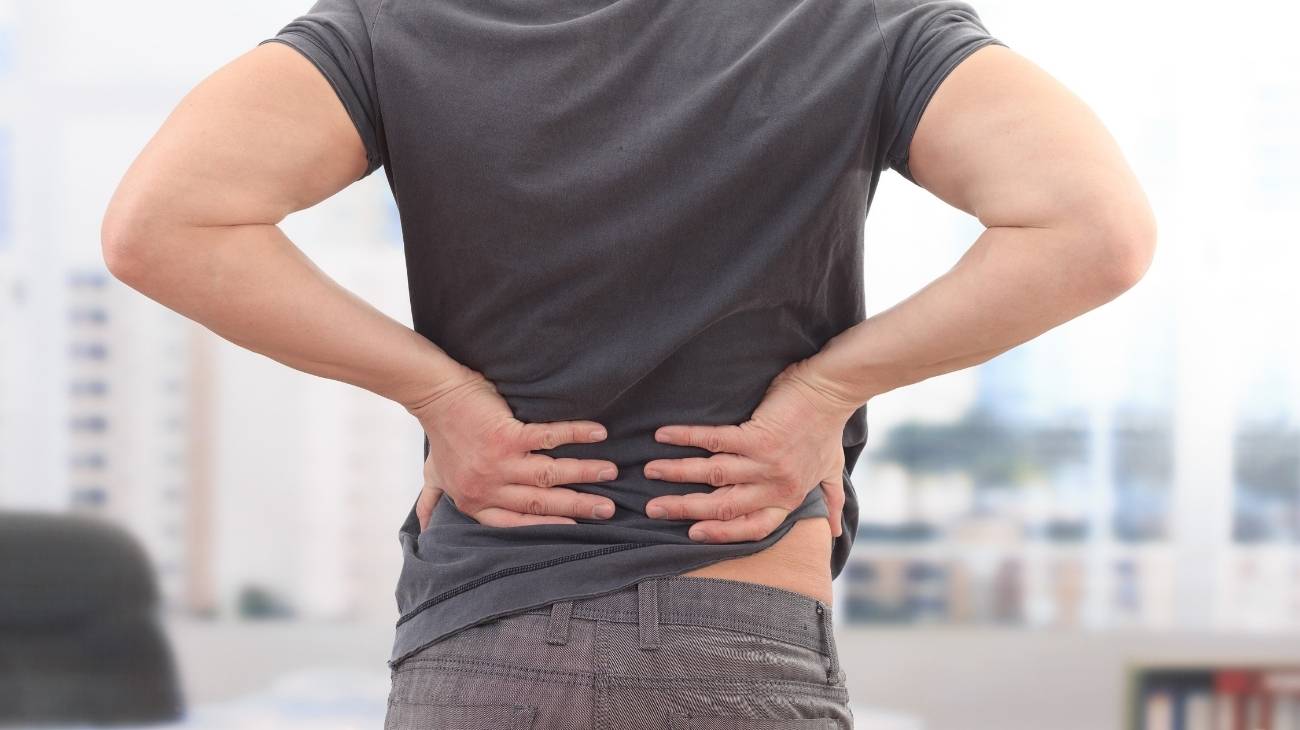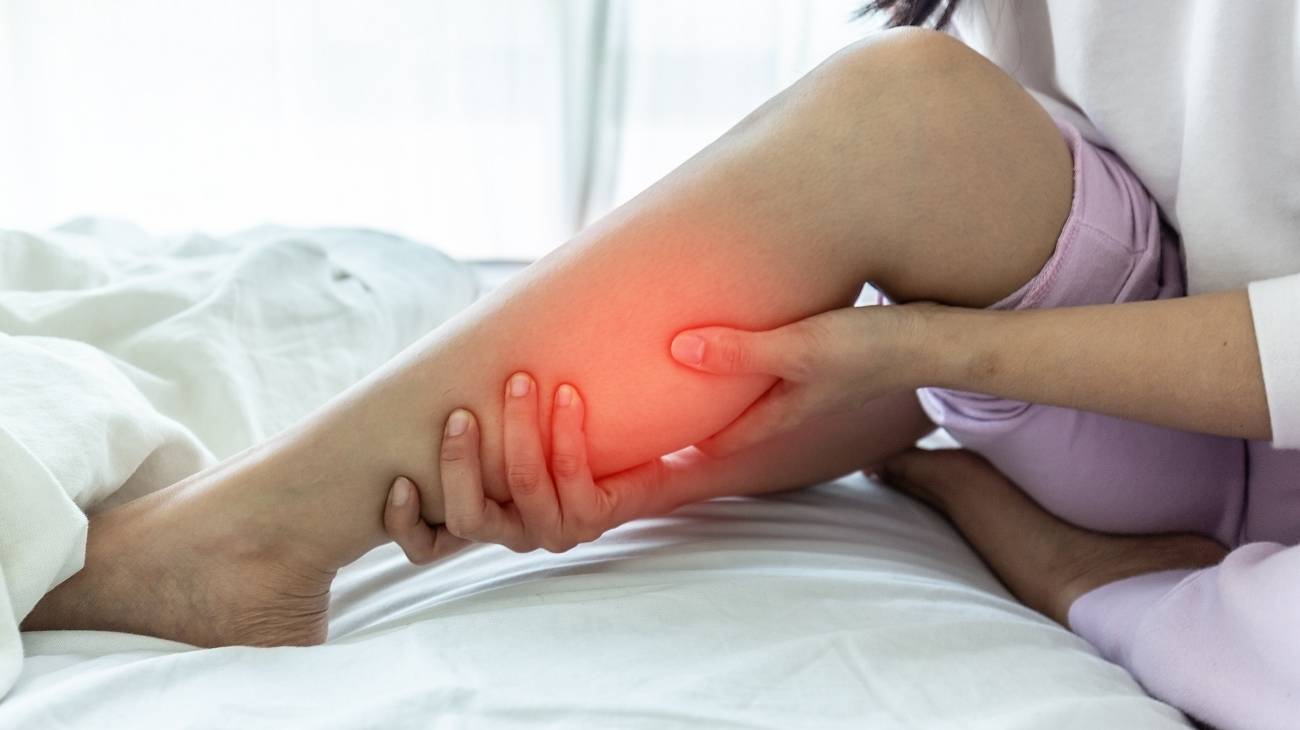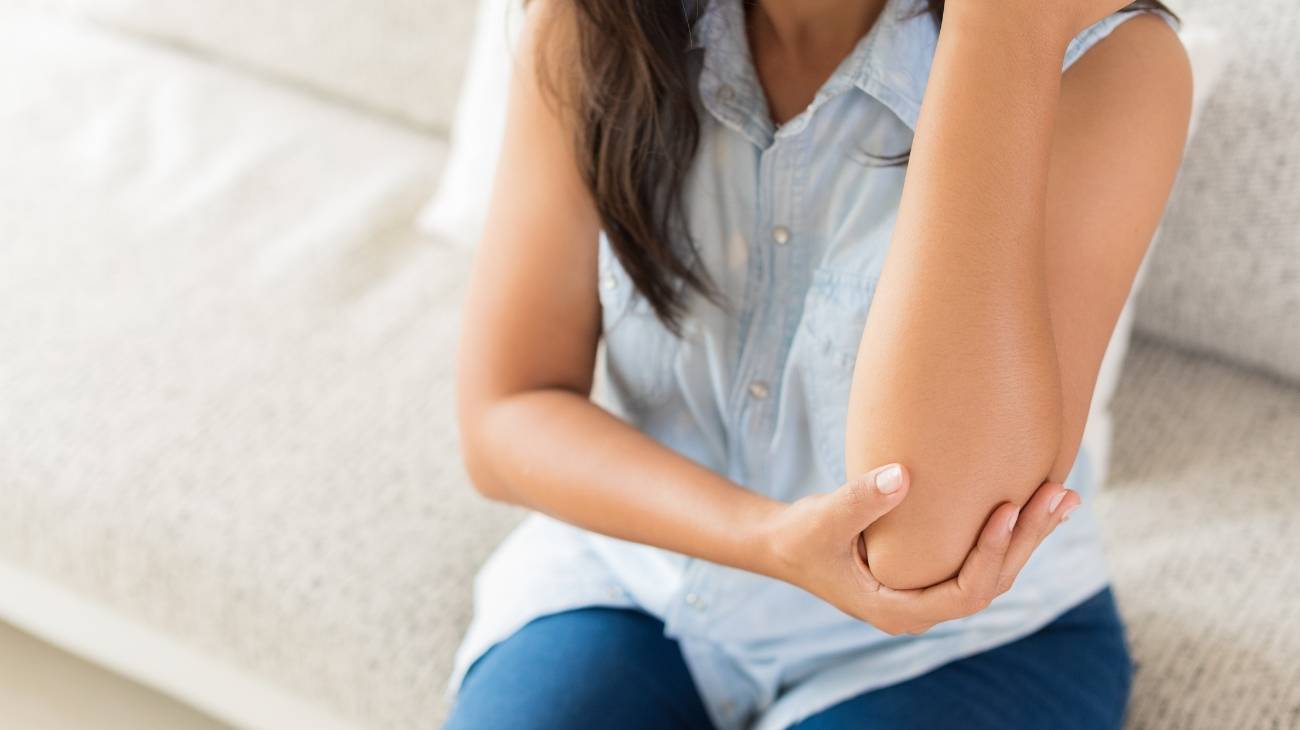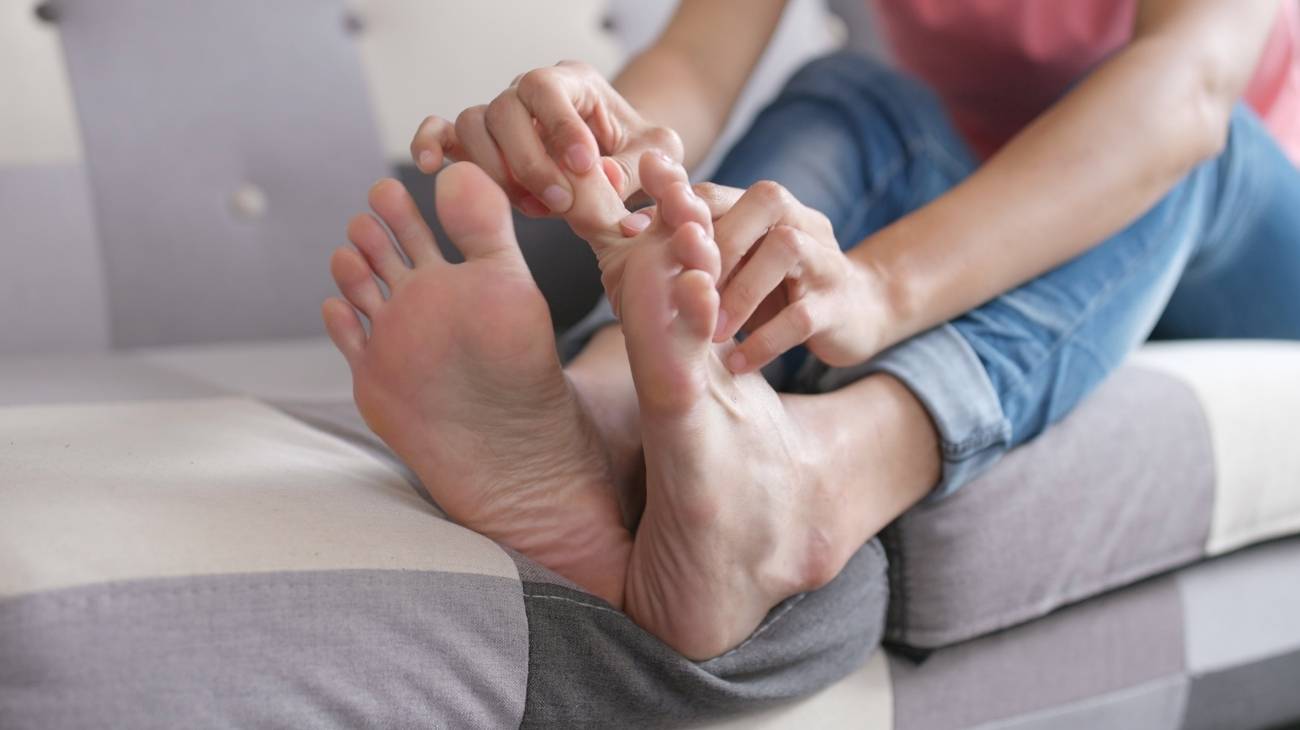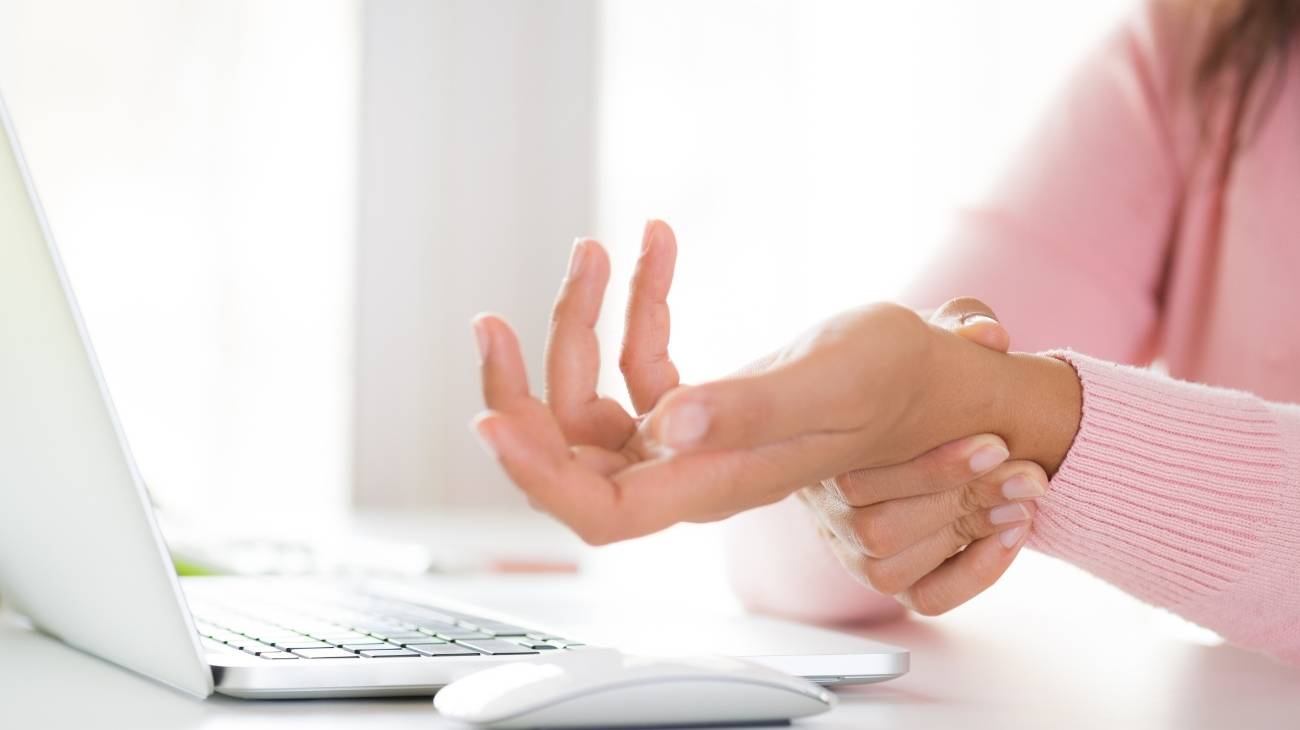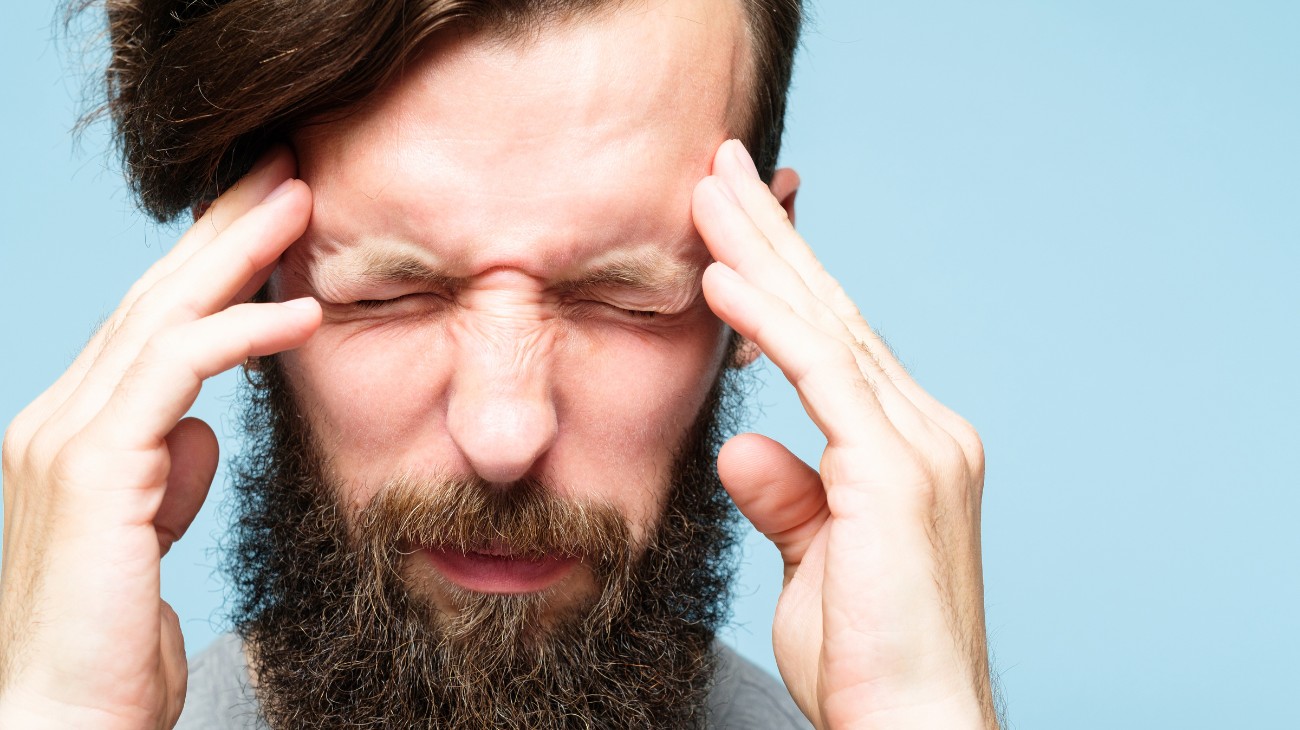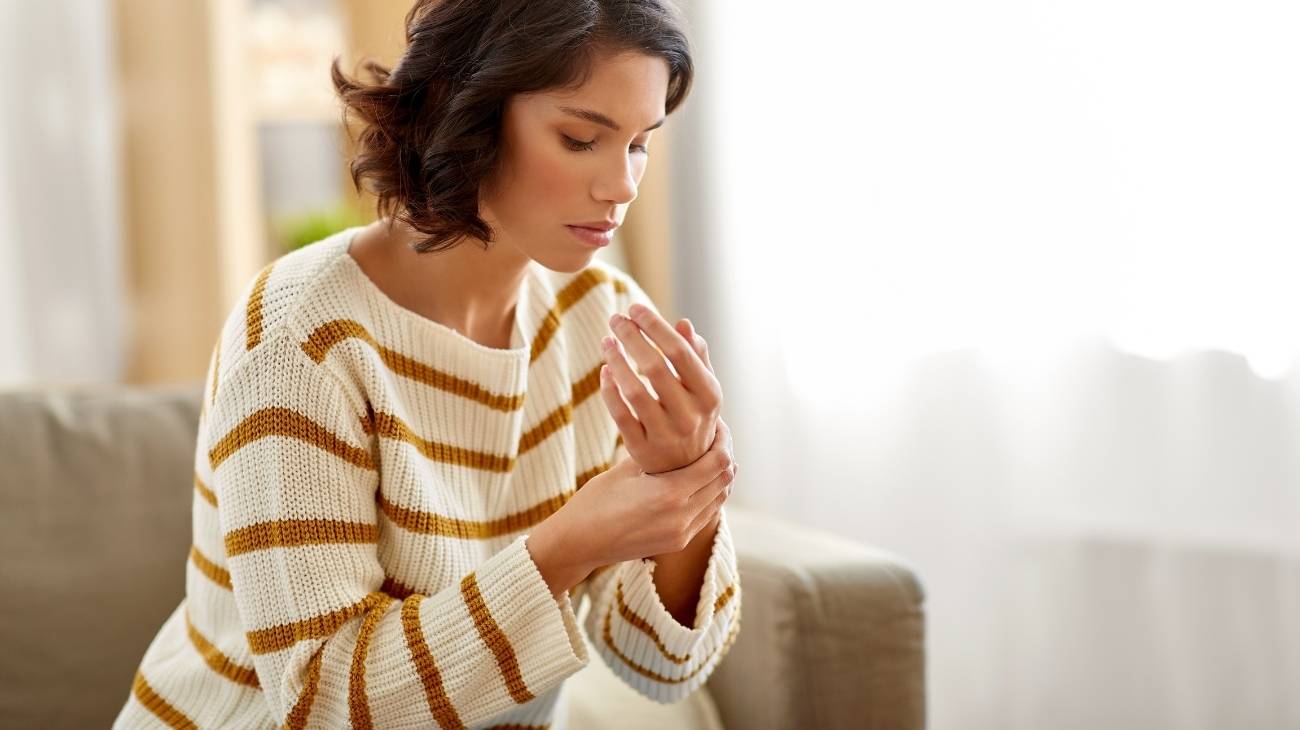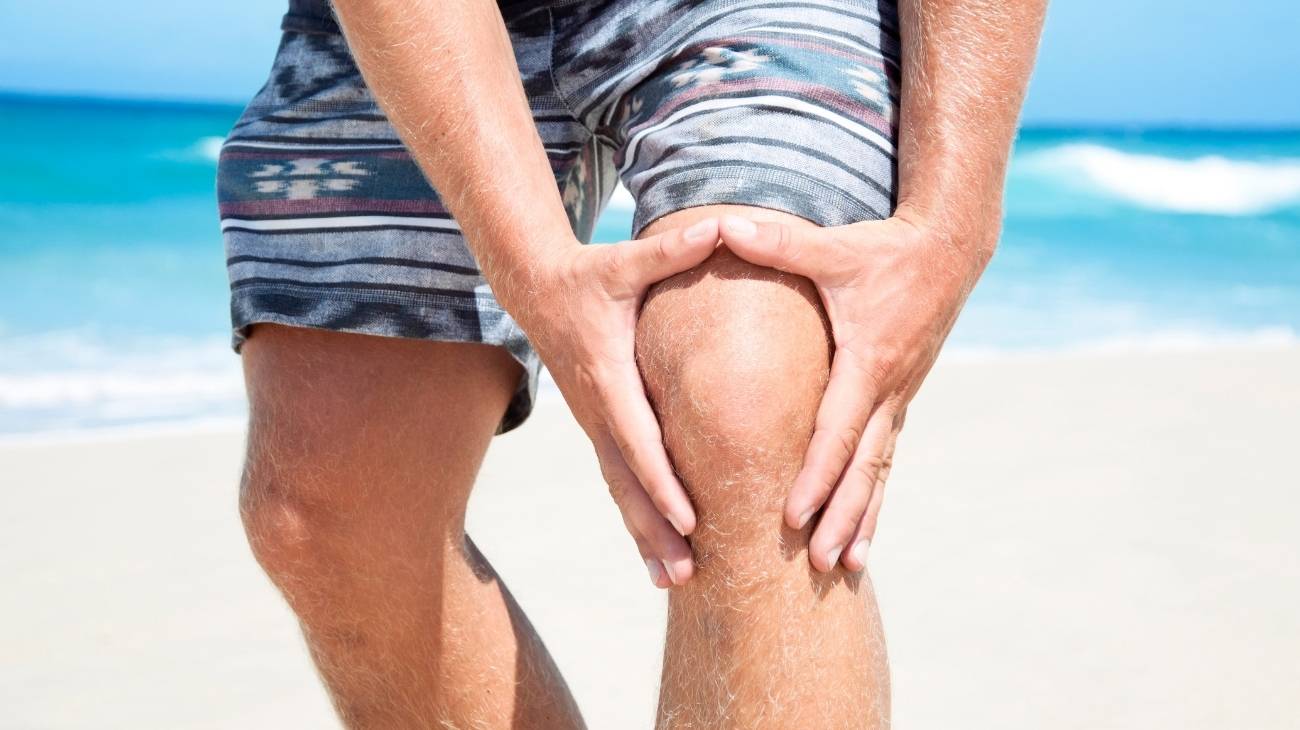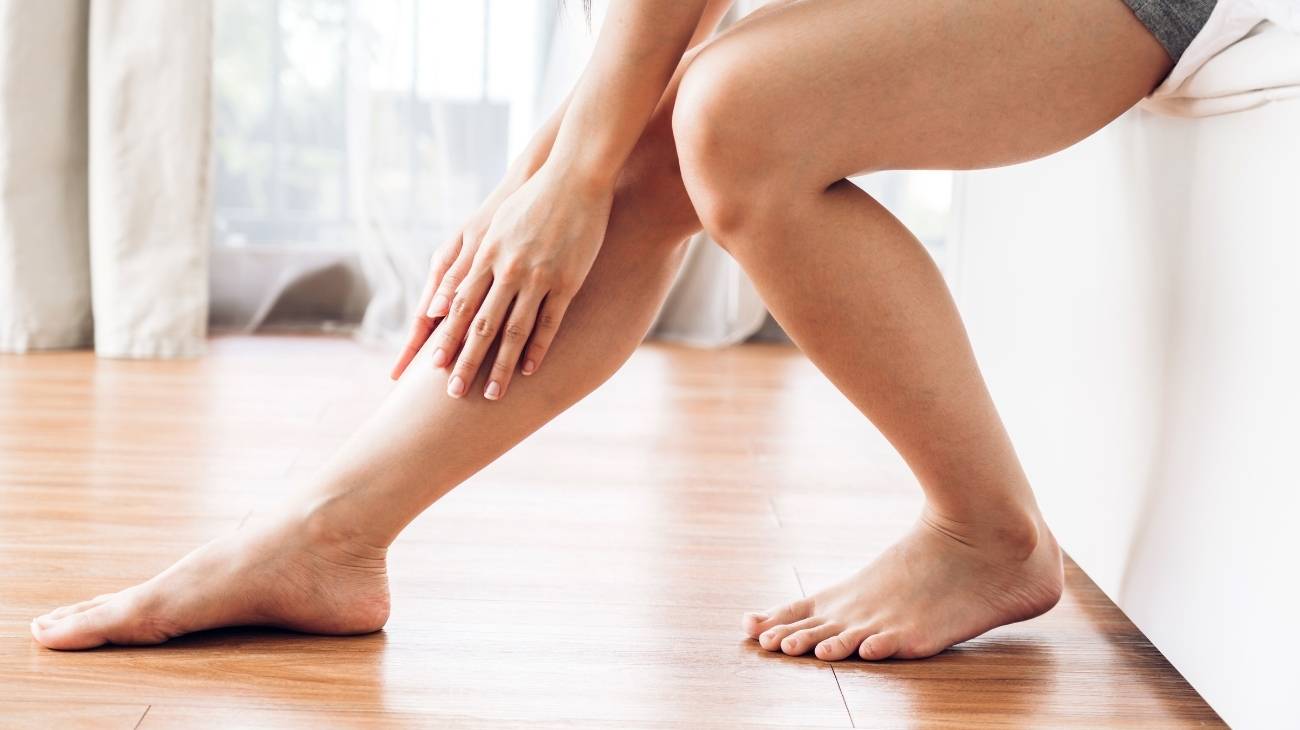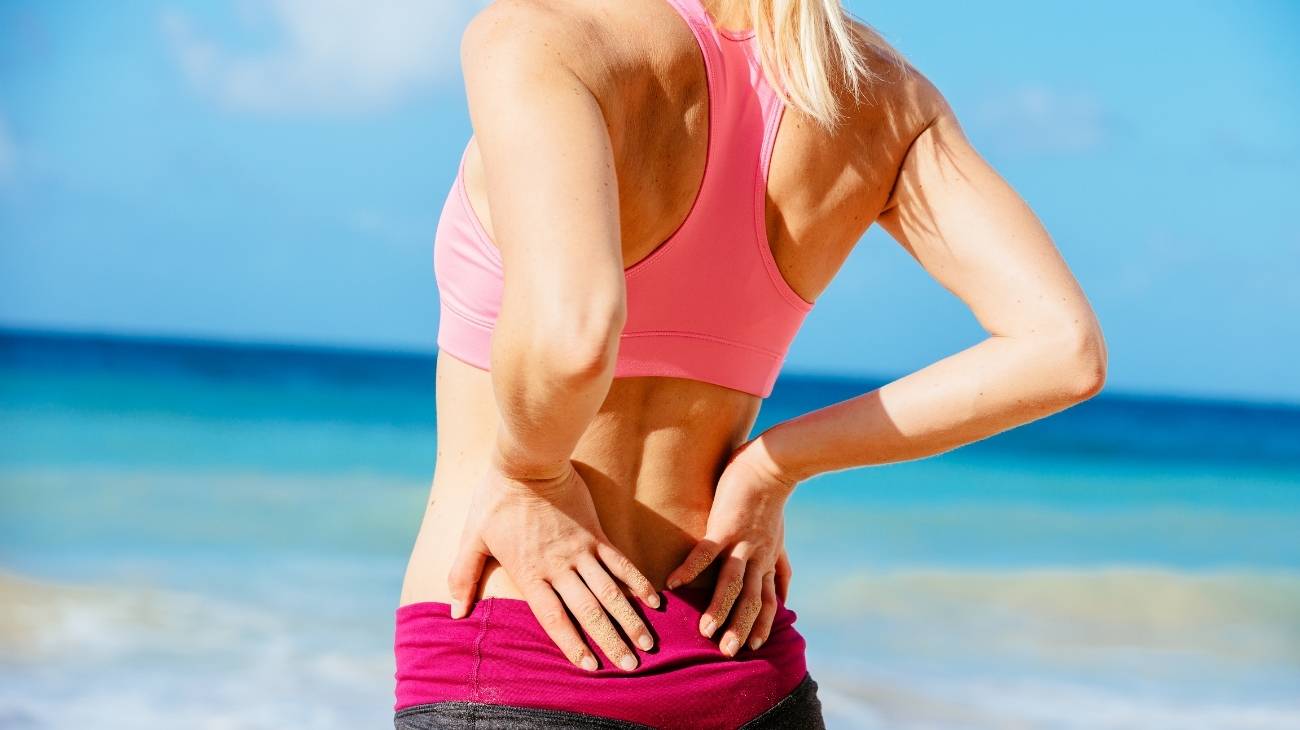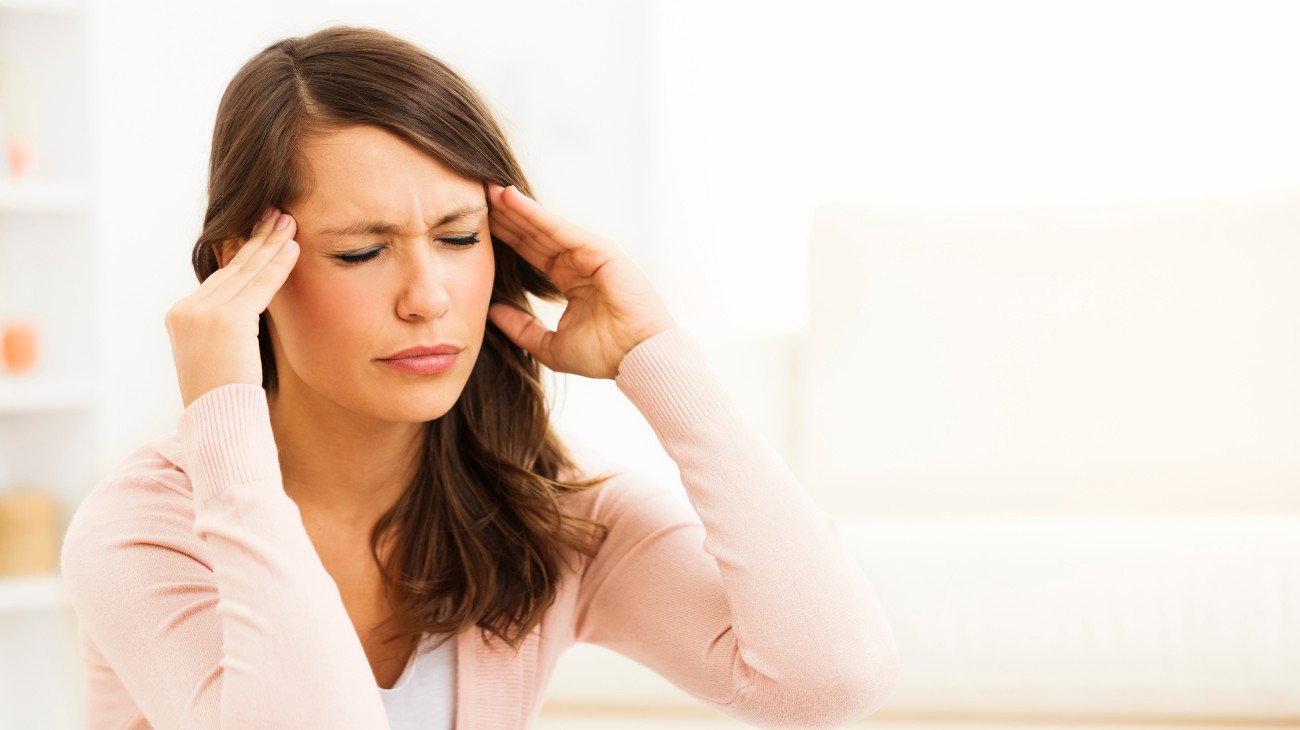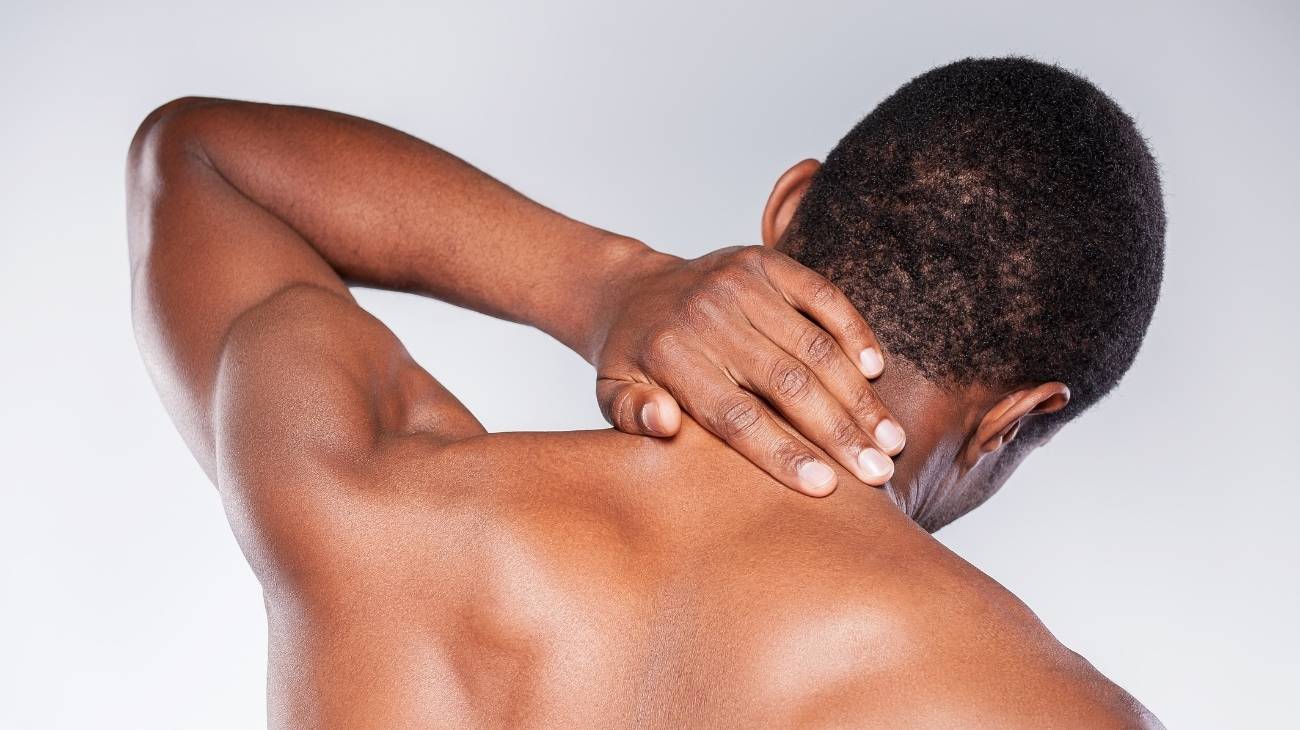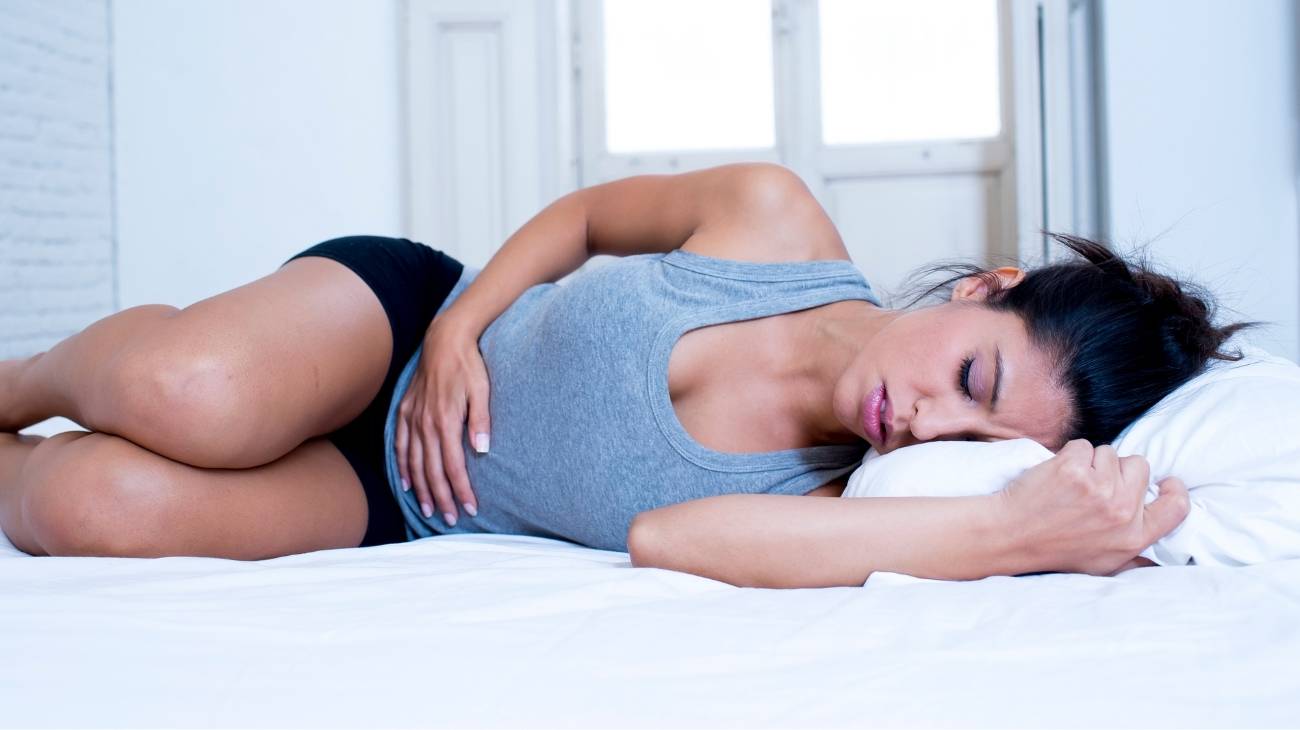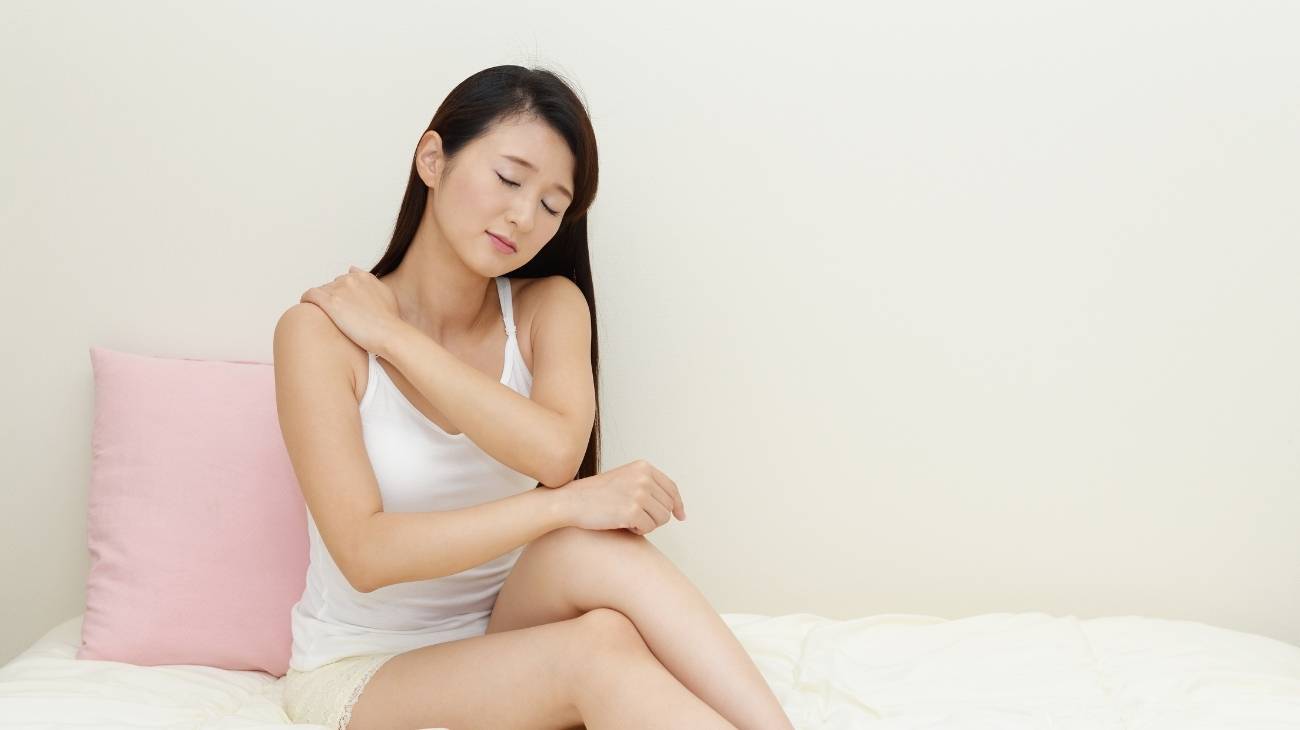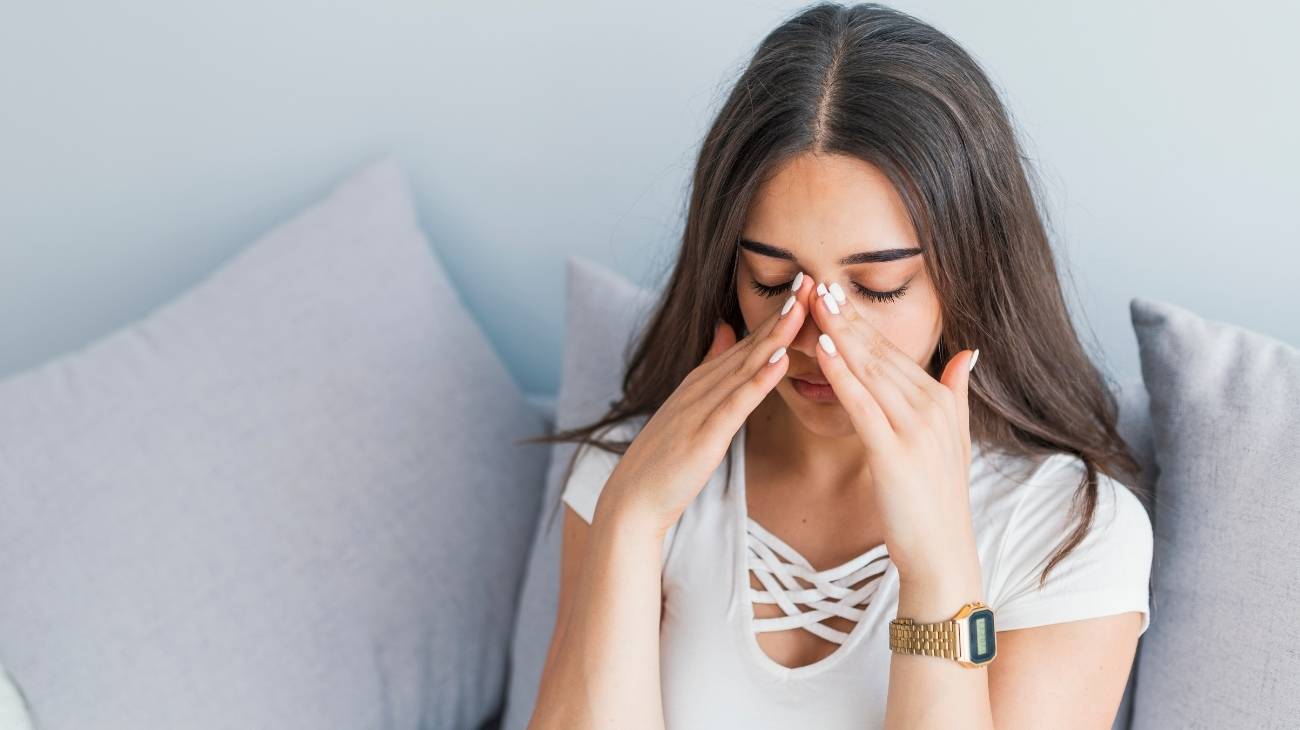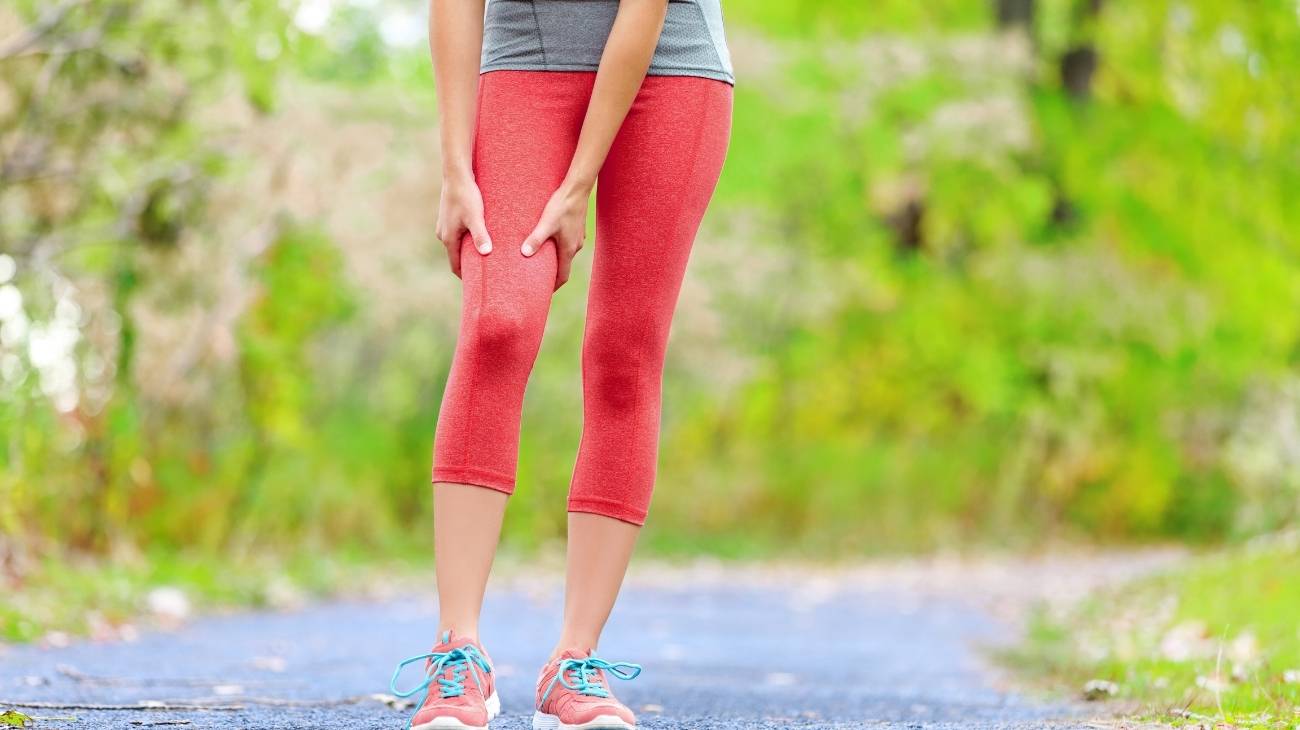- What is lumbago or lower back pain?
- Best products to relieve lower back pain
- What types of lower back pain are there?
- What causes lower back pain and what are the causes of lumbago?
- What kind of diseases can cause the onset of lower back pain?
- What are the symptoms and types of pain that make us think we have lower back pain?
- How can we relieve lower back pain through complementary and non-invasive therapies?
- How to apply the RICE therapy step by step to reduce lower back pain?
- How to prevent future attacks of lower back pain and avoid lumbago?
- Why should we avoid pills and injections to relieve lower back pain?
Would you like to know the secret to relieving lower back pain? It occurs more often than we would like, and because of its intensity, it prevents us from going about our daily lives and even prevents us from going to the doctor. Find out how you can reduce lower back pain.
Lower back pain or lumbago is delicate and can be difficult to treat. It has many causes, which we will show you, and it can easily occur during many common activities. If this is your case and you want to forget about lower back pain, read on to find out how it occurs, how to reduce this pain and how you can prevent it from happening again.
What is lumbago or lower back pain?
Lower back pain or lumbago are two terms that refer to a painful pathology of the back. As the name itself indicates, it is a pain that is located in the lumbar area, that is, in the lower part of the back, above the buttocks.
Its causes are usually very varied, but the most common is muscle strain due to effort or repetitive tasks that gradually wear down the lower back area and as a result the pain arises. All this and much more will be discussed in more detail in this article.
Best products to relieve lower back pain
Bestseller
-
Microwave Wheat Bag for Back Pain Relief (Extra Large) (Hearts)
£24,95 -
Microwave Wheat Bag for Back Pain Relief (Extra Large) (Oxford)
£24,95 -
Microwave Wheat Bag for Back Pain Relief (Extra Large) (Sport)
£24,95 -
Microwave Wheat Bag for Neck & Shoulder Pain Relief (Hearts)
£24,95 -
Microwave Wheat Bag for Neck & Shoulder Pain Relief (Oxford)
£24,95 -
Microwave Wheat Bag for Neck & Shoulder Pain Relief (Sport)
£24,95 -
Microwaveable Wheat Bag for Pain Relief (Hearts)
£20,95 -
Microwaveable Wheat Bag for Pain Relief (Oxford)
£20,95 -
Microwaveable Wheat Bag for Pain Relief (Sport)
£20,95 -
Wheat Bag for Microwave Classic Bottle Shaped (Hearts)
£20,95 -
Wheat Bag for Microwave Classic Bottle Shaped (Oxford)
£20,95 -
Wheat Bag for Microwave Classic Bottle Shaped (Sport)
£20,95
-
Back Support Belt (Black)
£39,95 -
Back Support Belt (Green)
£39,95 -
Back Support Belt (Pink)
£39,95 -
Ice Massage Roller Ball (Black)
£34,95 -
Ice Massage Roller Ball (Green)
£34,95 -
Ice Massage Roller Ball (Pink)
£34,95 -
Sacroiliac Support Belt (Black)
£24,95 -
Sacroiliac Support Belt (Green)
£24,95 -
Sacroiliac Support Belt (Pink)
£24,95 -
Soft Density Foam Roller for Recovery (Black)
£34,95 -
Soft Density Foam Roller for Recovery (Green)
£34,95 -
Soft Density Foam Roller for Recovery (Pink)
£34,95
What types of lower back pain are there?
There are two basic and medically interesting ways of classifying this problem, so let's see which are the most common types.
Types of lower back pain according to the cause
The first classification depends on the cause of the lower back pain:
- Mechanical lower back pain: This is usually non-specific, caused by movements that lead to functional overload (dysmetry, hyperlordosis, imbalance, etc.) and, above all, postural stress on the spine or alterations to its structure (displacement of vertebrae, joint degeneration, etc.). Rest helps. It is the most common type and, being acute pain without further symptoms, it heals spontaneously by itself.
- Inflammatory lower back pain: This is also known as secondary lower back pain. The cause is specific, an inflammation of a tissue in the lumbar area due to a clear reason (blow, impingement, clot, etc.).
- Radicular lumbago: Very specific, this is the pain we suffer when the root of a nerve between the vertebrae is pressed. The pain follows the path of the damaged nerve.
- Referred lumbago: Referred lumbago pain, as its name suggests, originates in an area other than the lumbar region, i.e. it is an indirect pain, the result of an illness or problem in places such as the hip or urinary tract, or stomach pain.
- Lumbociatalgia: This is a special type of lower back pain caused by damage to the sciatic nerve. Its symptoms are more and stronger, the pain being more intense than in other types but remaining constant and without improvement over the days. In addition, it spreads more physically, even down the whole leg (which actually hurts more than the back itself). There is numbness, loss of sensation or supersensitivity
Types of lower back pain according to the origin of the pain
The second classification is based on the occurrence of the pain:
- Simple acute lower back pain: This is a sudden attack of acute pain in the lower back that is practically incapacitating, preventing us from getting out of bed or going down stairs. Its intensity, once it is at its maximum, does not usually vary unless we find a specific posture. It is usually caused by a bad movement, overexertion or poor posture. We refer to an unnatural posture. Its duration, if there is no causal disease, does not exceed 15 days, and it is considered subacute if it lasts up to a month without noticeable improvement. If there is an underlying disease, lower back pain is considered acute even if it lasts several weeks.
- Chronic lower back pain: The pain may persist, but in many cases it is also intermittent or gets worse and milder as time goes by and also depending on posture. In addition, it is generally less intense than when it is acute. It is also more diffuse, sometimes extending to the sacral area. It allows us to carry on with our daily lives, albeit with pain, of course, but it does not block us. The most intense moments are at night and in the morning, and fatigue may appear, as well as static moments of long duration.
- Emotional or psychosomatic lower back pain: Very difficult to diagnose, this type is generally described as such when there is no physical cause or pattern to it. Sometimes, the patient clearly knows that there is an emotional, psychological reason for the physical pain. Sadness, anxiety or excessive anger are the main emotional causes.
What causes lower back pain and what are the causes of lumbago?
There are many circumstances in our daily lives which, in combination with other aggravating factors, can lead to lower back pain.
Pregnancy
It is quite normal to suffer from lower back pain during the 6th, 7th, 8th and 9th months of pregnancy, when the weight of the baby increases, which, in itself, is already a factor that causes lower back pain. In addition, in the last months of pregnancy, the baby takes up more space, putting pressure on nerves that modify the axis of our spine and, with it, our posture.
Avoid gaining weight as much as possible, wear low-heeled or platform shoes, sleep on your side and do yoga, stretching or physiotherapy exercises and you may avoid suffering from this problem. If you already have it, try thermotherapy at home, rest, and keep visiting a physiotherapist or even an osteopath.
Bad posture
Poor posture causes bones, ligaments, joints, muscles and other tissues to strain to maintain an unnatural posture. Tension over long periods of time can wear them out and lead to lumbago.
It will go away with time, but you should start to check your postural hygiene and look for the problem so that this damage to the lumbar region does not recur. Watch how you sit and stand, where you lean and how you sleep, and correct inadequate posture.
Intense strain
Mechanical lower back pain almost always occurs because we put a lot of strain on the area. This happens for things as simple as lifting more weight than we should or doing so by bending our back, making a sudden or false movement, maintaining inadequate posture in physical activities, etc. Generally, it is caused by muscle strain. This type of lumbago disappears by treating the strain or other pathology that may have caused it. Effective recovery methods are heat, rest and compression.
Stress or anxiety
We have already seen that psychosocial factors affect our organism. This occurs, for example, with pain in the neck, but it is also possible that we may experience pain in the lower back or feet. It is difficult to establish a clear link between these emotions and pain. Psychological disorders also cause this pathology to become chronic. It is therefore very important to work directly on them or we may have back pain for the rest of our lives.
Repetitive work
Any repetitive activity involves rapid wear and tear of the body area involved. If this repetitive activity also includes effort, either by carrying weight or by contracting and stretching the muscles more than they usually bear, it is much easier for our lower back to ache.
You will have to stop doing these tasks, rest, treat the muscle strain if there is any, and when you return to these jobs, it is recommended that you wear compression garments to protect the lower back and check the best postures and movements to achieve good postural hygiene during work.
Overweight
Being overweight puts an excessive load on all the bones and joints, the ones that suffer most are the lowest and weakest, as would be the case of the last vertebrae of the spine. Furthermore, we must not forget that on many occasions, extra lipid tissue is created which is capable of degenerating the vertebral discs. These tissues also secrete adipokines, which lead to the appearance of cytokines and thus to systemic inflammation.
The solution is to lose weight. If this overweight is caused by the thyroid, it will have to be worked on. If it is due to bad eating habits, we will have to modify them, including a lower calorie diet and much more protein and fibre, increase water consumption, design a plan of sporting activities, always under the supervision of health professionals.
What kind of diseases can cause the onset of lower back pain?
Of course, this pathology is not only caused by specific circumstances, but is often due to the presence of other pathologies and illnesses, which work together, or not, with the factors we have just seen.
Muscular problems
First and foremost would be the set of muscular problems. A strain, a tear, an intense and continuous wear and tear or a muscle strain are enough and, in fact, the most common reason for lower back pain, particularly acute lower back pain.
It is necessary to maintain good muscle tone, not let it atrophy, do strengthening exercises in the area, avoid static postures and know how to carry out certain domestic tasks that are exhausting our muscles without us realising it. Rest and compressive garments to treat the acute phase of the injury will be sufficient treatment.
Degeneration of the discs
These discs cushion the friction between the vertebrae. In good condition, they are perfect cushions, but as they wear down, the bones collide with each other with movement and produce dry, dull pain, worse when walking or standing and, although it can come on suddenly if coupled with some circumstance or risk factor, it is usually caused by mechanical abrasion of the bones over a long period of time. It includes inflammation and even instability of the lower back, in some cases it can lead to discartrosis.
Sciatica
The sciatic nerve, when irritated, causes a lot of pain. This is because some orders are sent to the brain and others are not sent, including those for muscle contraction. If this happens, we will notice a definite pain along the leg, which is where the sciatic nerve itself passes through.
However, we may also refer pain upwards, reaching the lumbar area, which is where the nerve will have become inflamed. This problem has pharmacological treatment, but to avoid its symptoms, rest and certain physical exercises to strengthen the lower back and leg muscles are also necessary.
Herniated or protruding disc
If we suffer a herniated disc, it is very likely that we will suffer a sciatic episode, which we have already seen is a picture of pain and numbness caused by irritation of the sciatic nerve and which includes this severe pain in both the lower back and the leg, sometimes even reaching the ankle. In the case of a herniated disc, the pain becomes even more focused, appearing between the L4 and L5 vertebrae or between L5 and S1. The same will occur if we have a disc protrusion.
Vertebral or disc displacement
The spine is the union of several ossicles. Obviously, if one or more of them are displaced, we are completely changing their morphology and, with it, their functional capacity. The fourth vertebra could move due to degeneration of the spine, narrowing the vertebral canal, which leaves less space for the natural movement of our body.
When this displacement occurs in the fifth vertebra we would speak of spondylolysis and spondylolisthesis. These bones, by shifting, compress the nerve roots. In addition to lumbago, this can lead to pain that affects the entire nerve, right down to the foot.
Sacral dysfunction
The sacrum lies immediately below the lumbar spine and over the tailbone (lower end of the spine). When the joint is no longer functional (movement is reduced or not limited) we begin to notice discomfort. These complaints can be lumbago or sciatica, which can develop into an episode of lumbago.
This is treated with ice at short intervals until the area is no longer inflamed and the damage is no longer categorised as acute, which may take several days. You will return to your daily routine with appropriate care not to strain the area and continue with thermotherapy to reduce the pain in your rest times and after any activity.
Facet syndrome
When the interapophyseal joints degrade, a mechanical type of lower back pain can occur. It is common to also suffer from pain radiating to the legs and buttocks. It can be treated with laser therapy, physiotherapy to strengthen and make the muscles more flexible or kinesiotherapy.
Scoliosis and hyperlordosis
This is the lateral deviation of the spine, a congenital disease. It occurs at any height of the spine, but can occur in the lumbar region. Its very existence means that both muscles and ligaments are continuously overloaded at the same time as the vertebrae degenerate.
Hypertenosis produces identical symptoms and consists of a more obvious pronunciation of the natural and correct shape of the spine. Its treatment requires rectification, this is treated with the use of a corset or in more severe cases, surgery must be resorted to. In addition, stretching and certain postures are necessary throughout your life to keep its symptoms at bay.
Coccydynia
Also known as lower back pain, this is pain in the coccyx area. Its occurrence can be caused by both organic and functional disorders. Obviously, by extension, it begins to affect the sacrum and then the lumbar vertebrae.
Osteoarthritis or osteoarthritis of the facet joints
Ageing means that the cartilage that accompanies your vertebrae wears away. This means that the spine is worn down at the back and that there is a lot of friction. Over time, the spine will become inflamed, spurs will form and pressure will be put on the nerves. The pain is such that movement is reduced; moreover, it increases over time. You will also notice an increased sensitivity to touch in the affected area.
Lumbar and spinal stenosis
This is a narrowing of the spinal canals or nerve roots. A possible result of this is compression of the nerve endings, resulting in pain in all areas where these nerves are located. It usually occurs as a consequence of osteoarthritis or the presence of spurs. Spinal stenosis causes pain by simulating an ape-like posture when standing and leaning forward.
Tumours
A tumour in the lower back will cause pressure on the tissues. As the tumour becomes more evident, various symptoms will develop. Obviously, there will be a displacement of the vertebrae triggering all the other symptoms listed in previous sections.
Bone infection
Bone infection, although difficult to cause, causes a lot of pain. Disks and vertebrae can be compromised due to the presence of both viruses and bacteria. In addition, the infection can spread to other regions and even cause the bone tissue to die. It is caused by a variety of diseases, so these must be diagnosed quickly and treated before there is no solution.
Pelvic dysmetry
The pelvis is not symmetrical in size, which means that our posture and gait are modified, something that can happen from birth without us realising it until years later, or as a result of an accident. As we walk, the spine is deflected to one side, vitiating the bones and straining their protective pads, which will wear away at the weakest area.
What are the symptoms and types of pain that make us think we have lower back pain?
Fortunately, in most cases, lower back pain does not include many other symptoms beyond pain.
- Chronic pain: Gentler and more dispersed, it appears little by little and its intensity is in accordance with movement, reducing considerably at rest.
- Intense and sudden pain: Lower back pain is considered as such, an attack of immediate pain of high intensity, such that it makes it impossible for us to carry out the vast majority of movements.
- Acute pain: Pain in its initial phase, in the hours following the injury that causes lower back pain.
- Paresthesia : Incorrect sensation of tingling and/or high or lower temperature.
- Dysaesthesia : Altered sensitivity, either increasing or decreasing, with unpleasant sensation to normal touch.
- Fever: Very rare, occurs in severe cases where there is an internal condition. Examples are bone or urinary tract infections, fluid admixture and, in general, internal toxic syndromes.
- Muscle weakness: This can be an effect of continuous immobilisation, i.e. spending days at home, i.e. atrophy of the tissues due to lack of use. However, it can also occur because it is the muscles that have failed us and have led us to this situation.
- Difficulty of movement: The intense pain and weakness of the muscles will make it really difficult to move, especially in the case of acute lumbago, which, as we have already said, leaves us really incapacitated, with the impossibility of carrying out a large number of movements.
How can we relieve lower back pain through complementary and non-invasive therapies?
Relieving lower back pain is relatively simple and does not require taking pills or using injections, which are very common but not at all beneficial to health. There are many other more natural and, without doubt, less invasive methods that we can use so that our back does not hurt.
Cryotherapy
The first of all is the use of cold. We will use low temperature treatment on the lower back if the painful attack has been sudden and the damage is very intense. The clearest case is when the pain appears after a sudden effort or movement, but there may also be other circumstances that we cannot detect, such as a pinched nerve. In any case, the application of cold is recommended to relieve lower back pain in the acute phase and when there is inflammation.
Thermotherapy
Once the pain is no longer acute and intense and the inflammation has subsided, the application of heat to the area is recommended. This can be from the third day after the injury, although sometimes acute lower back pain can last much longer and we have to continue using cold.
In any case, heat can be used for longer than cold, both in number and duration of daily applications. If you feel like it, soak in a bath of very hot water. It is also the ideal treatment in cases of chronic lumbago.
Massage therapy
Massages are suitable if you do not feel any pain during the massage, i.e. if you are in the right posture. If this is not the case, it is practically impossible to receive a massage. They are particularly useful in cases where a muscle contraction is the cause of the lumbago and you are looking for pain relief. In this way, the tension and stiffness of the tissue will be eliminated through friction, returning to normal and gradually reducing the pain. It is advisable to be constant in this treatment.
Acupressure therapy
With acupressure we are able to work on points that hurt us by affecting other points called meridians. These are usually beneficial for more than one circumstance, in the same way that there are also many acupressure points that will stimulate the same area.
We can exert constant pressure on points such as: L14 to work on stress or LV3, which has an impact on lower back pain itself and also helps to reduce anxiety, the one known as Ling Gu, which is very important and is also highlighted to treat sciatica in particular and lower back pain in general.
Other effective alternative therapies
If you are not completely convinced or want to combine the above with other therapies, you also have the following options:
- Natural remedies using plants: Lemon balm and lavender are ideal for keeping the organism balanced and preventing stress from taking hold of us. Juniper, ginger and devil's claw are analgesic and the latter two are also anti-inflammatory. With devil's claw, you will avoid possible spasms. Ginger, like the first two, will also help you to relax.
- Acupuncture: Stimulates, usually with needles, by hand, the appropriate points (meridians) to treat the damaged areas. Nowadays, we also find that thermal or mechanical stimulation of these points is performed with similar results. Some of the points on which the specialist will work are VB20, VB21, VB34, H6, V13, IG4, V37, V40, V60, R7, R10, C5, Yin Trang, VB29, VB31...
- Osteopathy: Complicated spinal manipulations should be performed by an osteopath. Lumbar traction is the remedy par excellence although, of course, depending on your case, many other techniques such as pressure or tissue mobilisation will be used.
- Electrotherapy: Electro-stimulation, using patches, blocks the pain messages that reach the brain. At high frequency it is ideal for acute lower back pain, and in bursts, with lower frequency, it offers very good results to cover the relief of lower back pain in the longer term, as if we were taking a medicine but without the damage.
- Meditation: It will help you to relax, especially if you suffer from emotional lower back pain. But it is also suitable for coping with any kind of pain and also to prevent it when you are healthy again. You can relax at home, learning to breathe and letting your mind go blank, try yoga or tai chi or progressive relaxation, always depending on how fit you are to move.
How to apply the RICE therapy step by step to reduce lower back pain?
When an acute episode of lower back pain occurs, it is best and most convenient to use the RICE therapy, in its updated version called the PRICE therapy.
- Protection: The first step involves protecting your lower back from the element that has caused the injury. In this case for any activity that causes pain, both the one that caused it and the one that makes you feel bad.
- Rest: Rest may not be an option but an obligation. Find a position in which you don't feel pain, numbness or spasms and hold it for as long as necessary, but don't overdo it.
- Ice: Use cold on the lower back to numb it and reduce possible swelling. An ice pack, a cold gel pack or compresses soaked in very cold water act as a natural painkiller. Apply for a maximum of 15 minutes at each session.
- Compression: Choose a compression therapy that helps you not to move the area more than an expert would consider appropriate. Wearing compression belts made of elastic material helps to maintain good posture.
- Elevation: In this case, elevate your legs to prevent fluid from going down or clots from prolonged rest.
How to prevent future attacks of lower back pain and avoid lumbago?
Once you know what this pathology is like, you will certainly not want to suffer from it again. The prevention of lumbago includes aspects such as:
- Maintain proper body weight: Our own body is already a burden, especially on sensitive bones such as the vertebrae. Don't strain them by making them bear more weight than necessary. In addition, you have already seen how fatty tissue in general can act in various ways to facilitate or aggravate any episode of lower back pain. A balanced diet of protein, carbohydrates and healthy fats is best. Drink water.
- Healthy lifestyle: Maintain good practices, such as not smoking, taking supplements and drinks such as tea, trying to walk to places, avoiding a sedentary lifestyle, playing sports or exercising to keep the weight off and to keep muscle mass in good condition.
- The right exercises: Of course, the exercises you choose must be done in the right way. Do not lift more weight than you can, load by bending your knees, increase the intensity of any sport gradually, use compression garments to help regenerate the affected area.
- Rest: Just as physical activity is beneficial for our body and to prevent muscle atrophy, overexertion can be bad for us. Therefore, don't forget to take breaks according to the activities you do, even if you think you don't need them. Remember that damaged tissues regenerate during rest.
- Postural hygiene: Physiotherapy will help you to correct the bad posture that has led you to suffer from lumbago pain, but also to prevent it with this correction and with the knowledge of other postures to practice every day. Avoid staying static, bending your spine too much and, of course, do not exert yourself continuously, use firm cushions if you sit for long hours, position your legs properly and avoid crossing them, etc.
- Stretching and exercises: A professional, be it a physiotherapist, an osteopath or your own doctor, will show you which exercises to do to stretch, maintain, recover and strengthen your body. Other practices such as yoga or pilates will also help due to their effects on the body when it comes to keeping us healthy, with good postural hygiene and, in addition, to relax.
- Thermotherapy: Whether to prevent lumbago if you are prone to suffer from it or to relieve the pain if it is chronic, applying heat to the lower back will be the most natural, beneficial and comforting thing you can do; this way you can take the opportunity to rest.
- Treatment of illnesses: If your lower back pain appears because you have some other problem, you will obviously have to solve it and keep it at bay so that neither pain nor the other symptoms that accompany it do not reappear.
- Specific footwear: For those who spend many hours on their feet, it is important to know that flat shoes are not beneficial, although they may seem so. Of course, high heels won't help either. The ideal is to wear a low, thick, stable heel that helps us to maintain a correct posture.
Why should we avoid pills and injections to relieve lower back pain?
Although we know that lower back pain is one of the most severe musculoskeletal pains, our advice is always to avoid using drugs in the first instance to try to reduce it. Generally, this is not necessary, and if it is, it should be determined by a doctor after diagnosing your case. So, if you do have to take medication, you will do so with the best advice, taking the minimum amount of drugs and under specialist supervision.
Otherwise, we would be talking about self-medication, a dangerous practice even in cases where we take the mildest painkillers. They do not have the same effect on everyone, nor is this the case even when you take one yourself on different occasions.
For some cases a medicine may be right, but in another situation it could even harm you. In any case, they all have side effects . Don't forget that medicines do not cure pain, they only camouflage it. So, when they wear off, the pain will return until the lower back pain (or the disease causing it) is cured.
References
- Huelke, D. F., & Nusholtz, G. S. (1986). Cervical spine biomechanics: a review of the literature. Journal of orthopaedic research, 4(2), 232-245. https://onlinelibrary.wiley.com/doi/abs/10.1002/jor.1100040212
- Illes, S. T. (2015). Low back pain: when and what to do. Orvosi Hetilap, 156(33), 1315-1320. https://europepmc.org/article/med/26256495
- Burton, A. K. (2005). How to prevent low back pain. Best practice & research Clinical rheumatology, 19(4), 541-555. https://www.sciencedirect.com/science/article/abs/pii/S1521694205000240
- Hoy, D., Brooks, P., Blyth, F., & Buchbinder, R. (2010). The epidemiology of low back pain. Best practice & research Clinical rheumatology, 24(6), 769-781. https://www.sciencedirect.com/science/article/abs/pii/S1521694210000884
- Waddell, G. (2004). The back pain revolution. Elsevier Health Sciences. https://books.google.es/books?hl=en&lr=&id=MsM5EAAAQBAJ
- Hofmann, F., Stössel, U., Michaelis, M., Nübling, M., & Siegel, A. (2002). Low back pain and lumbago–sciatica in nurses and a reference group of clerks: results of a comparative prevalence study in Germany. International archives of occupational and environmental health, 75, 484-490. https://link.springer.com/article/10.1007/s00420-002-0332-6
- Riihimäki, H. I. L. K. K. A., Tola, S. A. K. A. R. I., Videman, T. A. P. I. O., & Hänninen, K. A. R. I. (1989). Low-back pain and occupation. A cross-sectional questionnaire study of men in machine operating, dynamic physical work, and sedentary work. Spine, 14(2), 204-209. https://europepmc.org/article/med/2522244
- Nachemson, A. L., & Andersson, G. B. (1982). Classification of low-back pain. Scandinavian journal of work, environment & health, 134-136. https://www.jstor.org/stable/40964947
- Allan, D. B., & Waddell, G. (1989). An historical perspective on low back pain and disability. Acta Orthopaedica Scandinavica, 60(sup234), 1-23. https://www.tandfonline.com/doi/pdf/10.3109/17453678909153916
- Jöud, A., Petersson, I. F., & Englund, M. (2012). Low back pain: epidemiology of consultations. Arthritis care & research, 64(7), 1084-1088. https://onlinelibrary.wiley.com/doi/abs/10.1002/acr.21642

